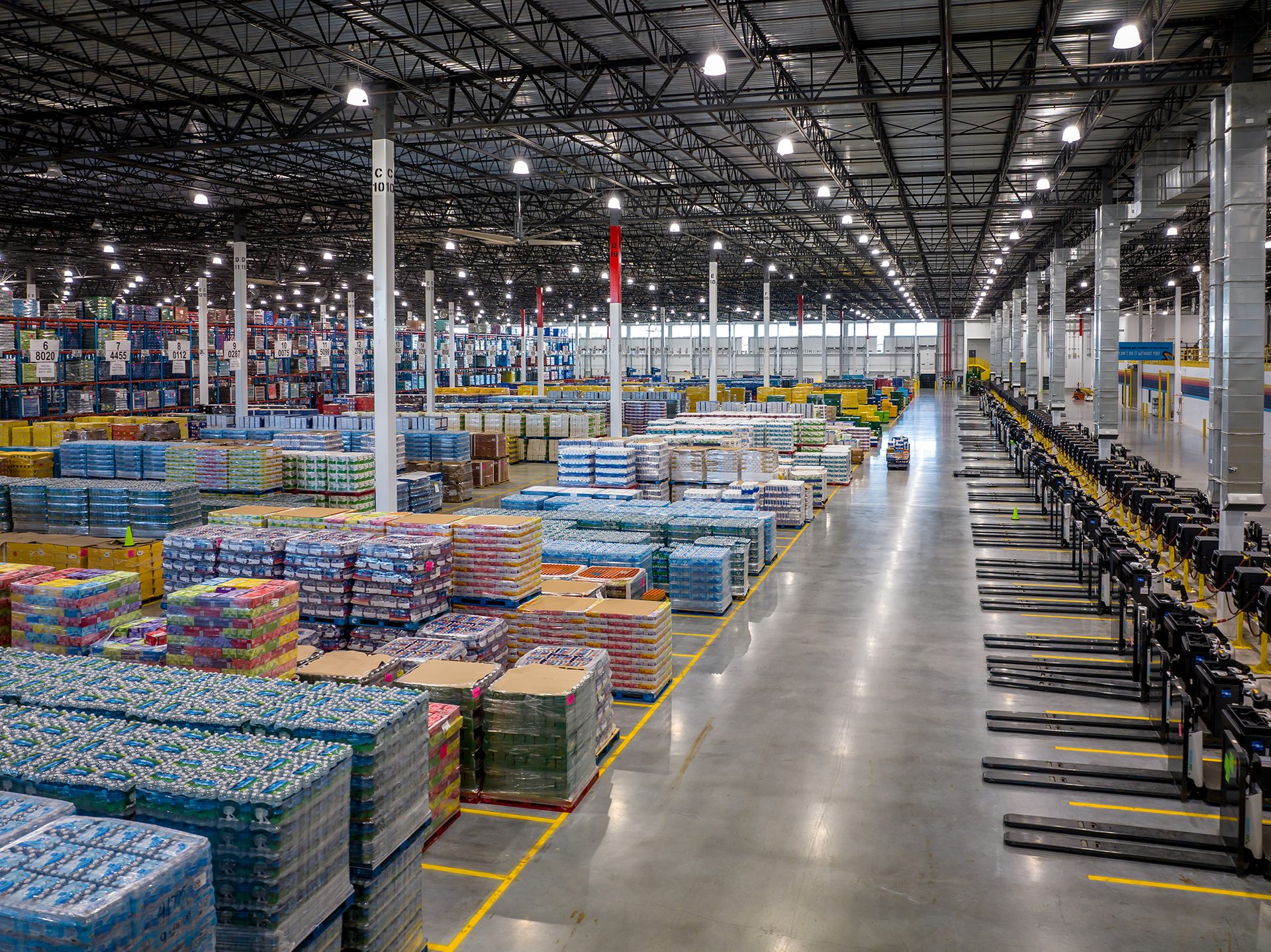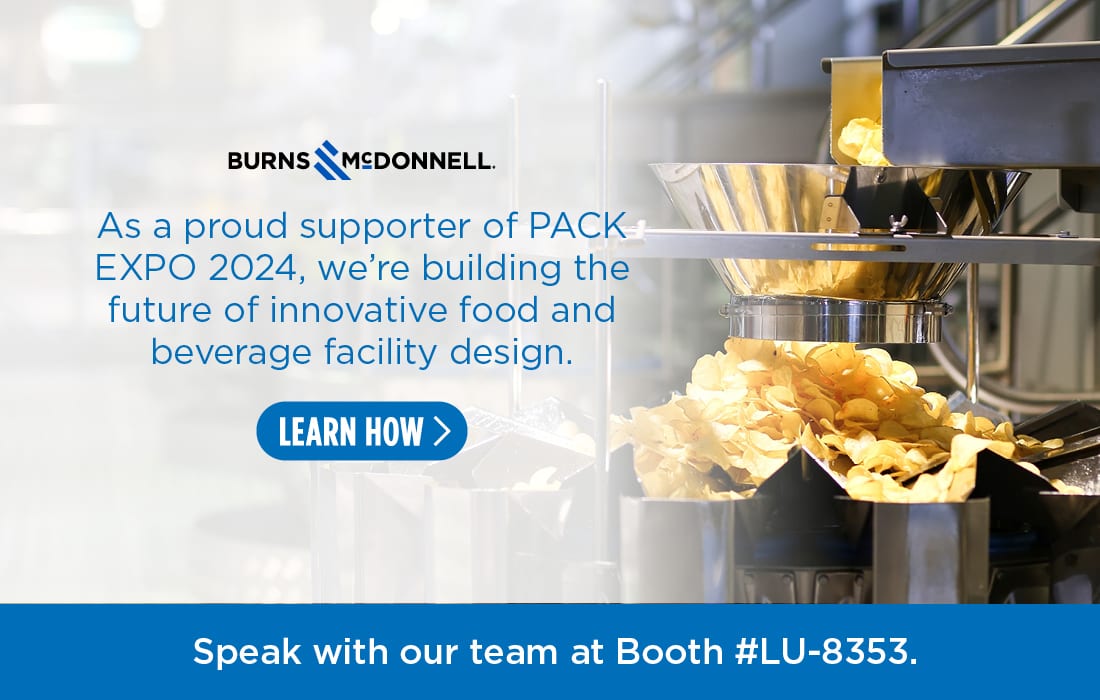PLANT CONSTRUCTION SURVEY Part 2
47th ANNUAL
Plant Construction
survey
Construction in the food and beverage industry is continuing, but there’s a bit of “wait and see” happening due to the presidential election occurring later this year.
Part 2
A M King recently designed and build the ALDI Regional Headquarters & Distribution Center in Loxley, Ala. Image courtesy of A M King
Packaging and warehousing continue to be areas of focus when it comes to automation. Both offer the best ROI and directly address the labor woes since tasks in those areas tend to be repetitive and physically challenging. Costs for systems have trended downward as more and more players have entered the market with products and services to give purchasers a variety of options.
This also means that areas beyond the packaging lines are starting to make use of automation. One area of note is quality control, which is happening in part because of advances in AI. “Traditionally, vision inspection systems required vision software experts to define specific defects, leading to rigid applications,” says Burns & McDonnell’s Raney. “With machine learning, vision systems can now learn from examples of good or bad parts and make decisions based on this learning, identifying defects they have not previously encountered.”
However, paying so much attention to automating processes can have some negative impacts. A M King’s Business Unit Leader Carl Morse points out that clients tend spend time analyzing the ROI because of the increased costs for construction, which in turn can increase the time it takes for a project to go live. “We have seen that as this gap swells, the overall operational requirements of these facilities rise to support the target metrics,” he says. “This potentially causes an increase in the overall size of the building, therefore a larger investment, but fewer viable locations and end users willing to make that commitment.”
BY Derrick Teal
Shown is dry storage with a charging station (right) at the Aldi Regional Headquarters & Distribution Center in Loxley, Ala. Image courtesy of A M King

CRB’s vice president of food + beverage, Jason Robertson, points out that his company’s recent “Horizons: Digital Age of Food Manufacturing” shows 48% of the 300 firms surveyed plan on increasing their spending on automation because of labor challenges.
“Regarding labor recruitment,” he says, “I find it interesting that many food manufacturers have not made large strides in improving the quality of life within their plants. While they often cite challenges in recruiting and retention, they should recognize that e-commerce facilities offer employees the opportunity to wear shorts and work in more appealing conditions.”
This isn’t to say that some companies aren’t already implementing this method of attracting and retaining employees.
“Employee welfare areas can be designed to be attractive, functional and comfortable. In the past, employers wanted breakrooms and locker rooms to be small and uncomfortable—reducing employee comfort and encouraging them to get back to work,” says A M King’s Tyler Goodwill, a design leader with the firm. “We’re now seeing much larger break rooms and locker rooms, fitted with all amenities imaginable, including natural light/outdoor access and in some cases complimentary food, cooked fresh daily.”
McCownGordon’s Baily adds, “In a tight labor market, employers are increasingly seeing these efforts reap indirect savings to their bottom line and can justify prioritizing worker well-being.”
Meati’s Mega Ranch, FOOD ENGINEERING’s 2024 Sustainable Plant of the Year, incorporates water conservation strategies both because of water scarcity in its location as well as the amount of water used in production. Image courtesy of Dennis Group

On the Subject of Food Safety
When it comes to food safety, AEC firms are saying their clients are increasingly having separate areas for raw and finished products created. While this has been a fairly common need with new construction, older facilities are increasingly making zoning adjustments to be more mindful of things like allergen contamination as well.
Water and wastewater treatment facilities and strategies are also being incorporated more frequently. They may require more extensive front-end design studies, but can result in considerable savings in utilities and improved product safety across the lifecycle of the operation, according to Gray’s Elkins.
On the subject of water, A M King’s Goodwill says, “We’ve seen increased interest from our food clients in implementing fully automated trailer washout systems, promoting ample cleaning of semi-trailers between loads.
“In addition, many food companies are required to have and implement a written food safety strategy that includes a recall plan,” he adds. “We’re seeing some food companies ask for a recall room—this is essentially a room to house recalled products in a safe place that will prevent accidental shipping.
“There is also more emphasis on not ‘breaking the cold chain.’ Our clients are asking for colder-than-typical temperatures on their shipping/receiving docks, as well as drive-in docks. In some cases, clients want to refrigerate dry docks that would otherwise be designed and built to handle conventional heating and cooling.”
"While the level of hygienic design and PPE depends upon the ISO standard of the room, we see alternative protein manufacturers adopting practices more akin to pharmaceutical or life science applications than they are to traditional meat processing." — Dean Elkins, Gray Solutions
Alternative Protein: Distinctly Different
Ask 10 people their thoughts on alternative protein and you’ll likely get 10 very different responses. It’s not necessarily a divisive topic, but people do have their opinions on what the future holds for it. However, nearly everyone agrees that the alternative protein market hasn’t had the smoothest sailing recently. Some see that as a sign of alternative protein being a fad, while others see it as the growing pains experienced by any new product segment. These problems may be exacerbated by the fact that there’s a differing opinion regarding how facilities processing alternative protein should be approached.
Gray’s Elkins says that, “Alternative protein manufacturing is vastly different from traditional protein manufacturing through virtually every aspect of the process, up to form, fill and seal (FFS).”
“[A]lternative protein manufacturing operations require facilities to maintain higher standards for cleanliness,” he adds. “This requires designers to incorporate ISO clean rooms into facilities, as well as equipment with higher IP ratings and ergonomically designed, washdown-capable machines. While the level of hygienic design and PPE depends upon the ISO standard of the room, we see alternative protein manufacturers adopting practices more akin to pharmaceutical or life science applications than they are to traditional meat processing.”
CRB’s Robertson agrees, adding that it’s only in final packaging that layouts of a conventional protein facility and an alternative protein facility resemble one another.
Finally, according to A M King’s Jon Miller, business development director, both established and startup alternative protein manufacturers are watching their capital expenditures very closely as they move from their initial pilot facilities to commercial-scale projects.
"Equipment technology selection has been impacted by this shift in focus—going from liquid cooler systems and evaporative cooling technologies to air-cooled systems." — Robb Rainey, Burns & McDonnell
Adding Sustainability
Making facilities or processes more sustainable is one thing that is unquestionably happening throughout the industry. As mentioned earlier with regard to food safety, water is a key focus area for many.
“Carbon footprints, water usage, odor control, wastewater discharge and land disturbance are all items that community members consider as project sites emerge, and their support (or lack thereof) carries more weight as community leaders and corporate leadership collaborate on project decisions,” says Gray’s Kornman.
“We have been working on several projects to reduce water requirements at individual unit operations, installing local polishing and recycling skids for more efficient use of water already in the system, as well as installing primary and secondary treatment systems to reclaim process water onsite,” says Burns & McDonnell’s Raney. “Equipment technology selection has been impacted by this shift in focus—going from liquid cooler systems and evaporative cooling technologies to air-cooled systems. This shift is crucial for industries that are heavily water-dependent and for regions facing water scarcity issues.” He adds there are growing concerns around PFAS, which is also causing manufacturers to look at their wastewater discharge.
While still not as prevalent, onsite renewable energy production is starting to gain traction, which one of the biggest deterrents still being upfront costs. It’s for this reason that partnerships with local utilities are still more popular for green electricity.
As many companies sit in a holding pattern as the political landscape continues to unfold, we’ll see how the industry deals with the aftermath. We’ll be sure to report on our findings next year. FE



